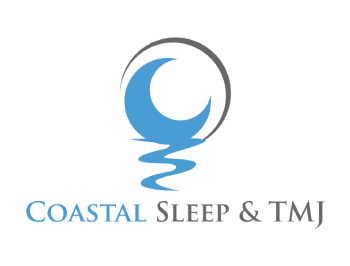Temporomandibular joint disorder, commonly known as TMJ, affects a significant number of individuals across the globe. This condition can cause a range of uncomfortable symptoms, including pain in your jaw, headaches, and neck pain. Fortunately, exercise can help manage these symptoms.
Regular exercise helps strengthen muscles and improve flexibility. This in turn can ease TMJ pain and prevent future issues. Understanding how exercise benefits TMJ sufferers can empower individuals to take control of their condition and improve their life.

How the Right Kind of Exercise Can Help Soothe TMJ Pain
You might be dealing with a TMJ disorder if you’ve ever felt a sharp pain in your jaw, heard a clicking sound when you chew, or gotten a headache that seems to start right near your ears. TMJ stands for your temporomandibular joint, which is the hinge that connects your jawbone to your skull.
You have one on each side of your face, and they are responsible for every time you talk, yawn, or eat. When these joints aren’t working properly, it can cause a lot of discomfort and make simple, everyday activities frustrating.
The pain isn’t always just in your jaw. TMJ issues can cause headaches that feel like migraines, earaches, and even pain in your neck and shoulders. You might find it hard to open your mouth wide, or hear a popping or grinding noise when you do. Understanding what’s happening is the first step to feeling better.
What Causes TMJ Problems?
There isn’t just one single cause for TMJ disorders. It’s often a combination of a few different things. One of the biggest culprits is stress. When we feel stressed or anxious, many of us unconsciously clench our jaws or grind our teeth, especially while we sleep. This puts a huge amount of strain on the muscles and the joint itself.
Another common cause is arthritis. Arthritis can cause inflammation and wear down the cartilage in the joint, just like it can in knees or hips. Sometimes, an injury to the jaw can start the problem.
Even something as simple as having teeth that don’t line up perfectly when you bite down can put extra stress on the joint over time. Figuring out the root cause is a key part of finding the right TMJ treatment.
How Can Exercise Possibly Help My Jaw?
It might seem strange to exercise a part of your body that hurts, but the right kind of gentle movement is one of the most effective ways to manage TMJ pain. Think of it like physical therapy for your jaw. The goals are simple:
- To gently stretch and strengthen the muscles around the joint
- To improve how the joint moves
- To release the tension that makes the pain worse.
Regular, gentle exercise also helps your body in bigger ways. It’s a proven stress-buster. By going for a walk, swimming, or doing yoga, you can lower your overall stress levels. You’ll be less likely to clench your jaw without realizing it.
Exercise also boosts blood flow, which helps bring healing nutrients to the sore area and reduces inflammation. Over time, this consistent care can lead to less stiffness, less pain, and a jaw that functions much more smoothly.
Simple Exercises You Can Try at Home
You should always check with a doctor or dentist before starting new exercises, but here are some common ones that can help. The most important rule is to be gentle and never push into pain.
The Relaxed Jaw Exercise
This is a great way to train your jaw to rest in a neutral position. Gently place the tip of your tongue on the roof of your mouth, right behind your front teeth. Then, let your jaw relax completely so your top and bottom teeth are not touching.
You should feel the muscles in your jaw and cheeks go slack. Hold for five seconds and release. Repeat this five to ten times throughout the day to break the habit of clenching.
The Goldfish (Partial Openings)
This helps with jaw mobility without overdoing it. Place your tongue on the roof of your mouth and put one finger on the TMJ joint in front of your ear. Put another finger on your chin.
Now, slowly drop your jaw halfway open and then close it. You should feel the joint move, but it shouldn’t hurt. Do this six times, and try to do a set of six repetitions once or twice a day.
Chin Tucks for Posture
Poor posture, especially when we hunch over our phones and computers, puts a lot of strain on our necks and jaws. To combat this, sit or stand up straight with your shoulders back. Now, without tilting your head, gently pull your chin and head straight back like you’re trying to make a double chin. Hold for three seconds.
You should feel a stretch at the base of your skull and the top of your neck. Repeat ten times. This strengthens your neck muscles and can keep your head aligned.
Gentle Side-to-Side Jaw Movement
This improves flexibility. Place a thin object, like a pencil or a craft stick, between your front teeth. Now, slowly move your jaw from side to side, using the object as a guide. As this gets easier, you can move the object further back between your teeth. This encourages controlled, safe movement.
Resisted Mouth Opening
This gently strengthens the muscles that open your jaw. Place your thumb under your chin. Now, slowly open your mouth while gently applying pressure with your thumb to resist the movement. Don’t force it because you’re just providing a little resistance. Hold for three to five seconds, then close your mouth. Repeat five times.
The Bigger Benefits of an Active Lifestyle
Committing to these small exercises and general physical activity does more than just ease jaw pain. It leads to stronger, more flexible jaw muscles, which makes the joint more stable. It significantly reduces the physical tension that feeds the pain cycle.
Perhaps most importantly, taking proactive steps to manage your TMJ can make you feel more in control of your health. You’ll get a huge boost for your mental well-being when you’re dealing with chronic discomfort.
By making these exercises a part of your daily routine, you’re actively working to build a healthier and more comfortable foundation for your jaw. If your pain is severe or doesn’t improve, seek professional help from a specialist. Dr. William Harper can create a personalized treatment plan just for you.
